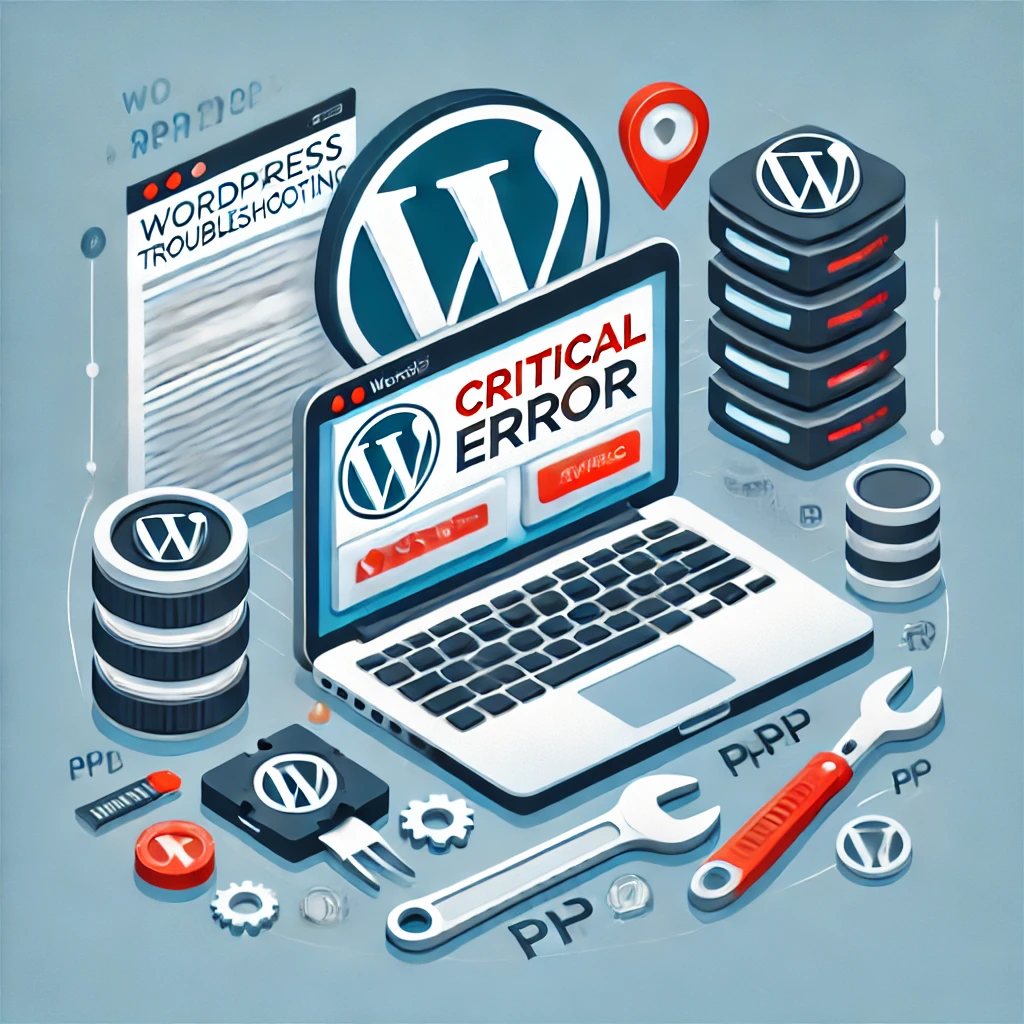Table of Contents
ToggleIntroduction
Encountering the “There has been a critical error on this website” message in WordPress can be frustrating. This issue often occurs due to plugin conflicts, theme errors, or server misconfigurations. In this guide, we’ll walk you through the most effective troubleshooting methods to quickly restore your website and prevent future occurrences.
1. What Does “There Has Been a Critical Error” Mean in WordPress?
This error message typically indicates a PHP issue or compatibility conflict within your WordPress site. It may happen due to a faulty plugin, theme update, or server misconfiguration. The error prevents users from accessing the website, making immediate troubleshooting essential.
Common Causes of the Critical Error:
- Plugin conflicts after an update.
- Theme errors from outdated or corrupt files.
- PHP memory limit issues.
- Incorrect file permissions or server settings.
2. Enable WordPress Debug Mode to Identify the Issue
WordPress has a debug mode that shows detailed error messages, helping you pinpoint the cause. Here’s how to enable it:
Steps to Enable Debug Mode:
- Access your website files through FTP or your hosting control panel.
- Open the wp-config.php file in the root directory.
- Add the following code or change it to
trueif it already exists:define( 'WP_DEBUG', true );
define( 'WP_DEBUG_LOG', true );
define( 'WP_DEBUG_DISPLAY', false ); - Save the changes and visit your website again to check the debug log (found in
/wp-content/debug.log).
3. Check for Plugin Conflicts
If you recently installed or updated a plugin, it might be causing the error. You can temporarily disable all plugins to verify.
Steps to Deactivate Plugins via FTP:
- Access your website files via FTP or your hosting control panel.
- Navigate to the
/wp-content/pluginsfolder. - Rename the folder to something like
plugins-disabled. - Visit your site to see if the issue is resolved.
- Reactivate plugins one by one by renaming their folders back to original names to identify the faulty plugin.
4. Switch to a Default WordPress Theme
A theme-related issue can trigger this error, especially after updates or if the theme is incompatible.
How to Switch to a Default Theme via FTP:
- Log in to your site via FTP.
- Navigate to
/wp-content/themes. - Rename your active theme’s folder to deactivate it.
- WordPress will automatically switch to a default theme (e.g., Twenty Twenty-Three).
- Check if the error is resolved.
5. Increase PHP Memory Limit
The critical error might occur if your site runs out of memory. You can increase the PHP memory limit to fix it.
Steps to Increase PHP Memory Limit:
- Open the
wp-config.phpfile via FTP. - Add the following line:
define( 'WP_MEMORY_LIMIT', '256M' );
- Save the file and reload your site.
- If the issue persists, contact your hosting provider to adjust server settings.
6. Restore a Recent Backup
If the error occurred after an update or new installation, restoring a backup might be the easiest solution.
How to Restore from Backup:
- Use a backup plugin like UpdraftPlus or Jetpack to roll back your site to a working version.
- Alternatively, restore a backup via your hosting control panel.
- Check if your site is back online after restoration.
7. Update WordPress Core, Plugins, and Themes
Outdated plugins or themes can trigger errors. Make sure everything is up to date.
How to Update Safely:
- Log in to your WordPress dashboard if it’s accessible.
- Navigate to Dashboard > Updates.
- Update the WordPress core, plugins, and themes.
- If you can’t access the dashboard, manually update files through FTP.
8. Review Error Logs in cPanel or Hosting Dashboard
Hosting providers store error logs that can help identify the root cause.
How to Check Error Logs:
- Log in to cPanel or your hosting dashboard.
- Go to the Error Logs section.
- Look for PHP-related errors or file permission issues.
- Use the information to resolve conflicts with plugins, themes, or the server.
9. Contact Your Hosting Provider for Assistance
If you’ve tried all the above steps and the issue persists, it might be server-related. Your hosting provider can help you analyze server logs and adjust configurations.
When to Contact Hosting Support:
- If you suspect PHP configuration or permissions issues.
- If server-side errors are causing the problem.
- Request assistance with restoring a working backup if necessary.
Conclusion
The “There has been a critical error on this website” message in WordPress can be resolved with a few troubleshooting steps. Start by enabling debug mode to get detailed error messages. Check for plugin and theme conflicts, increase the PHP memory limit, and update your site components regularly. If the issue persists, restoring a backup or contacting your hosting provider can help bring your website back online. Staying proactive with site maintenance and backups can prevent future issues.



